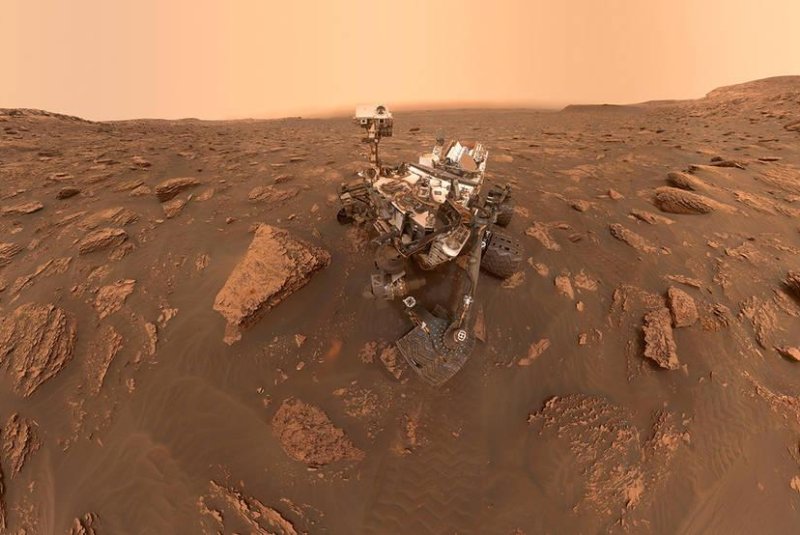A series of technical glitches have forced Curiosity's mission engineers to spend much of 2018 troubleshooting. Photo by NASA/JPL
Oct. 4 (UPI) -- NASA engineers have switched the Curiosity rover's brains, ceding control of the spacecraft to a backup computer. The move will allow engineers to analyze Curiosity's main processor, which has been unable to function properly for a few weeks.
Last month, Curiosity's main computer experienced a computer glitch. The problem has prevented the rover from storing science and engineering data.
By using Curiosity's backup computer, engineers will be able to run a series of diagnostic tests to identify the problem and develop a fix.
Most NASA spacecraft are designed with two identical processing units. The redundancy allows engineers to address technical issues without interrupting functionality. If one computer were to fail completely, Curiosity could operate effectively on the backup.
"We spent the last week checking out Side A and preparing it for the swap," Steven Lee, Curiosity's deputy project manager, said in a news release. "It's certainly possible to run the mission on the Side-A computer if we really need to. But our plan is to switch back to Side B as soon as we can fix the problem to utilize its larger memory size."
While Curiosity can still perform basic functions, it will need to take a break from it's scientific mission while engineers work to fix the glitch.
"At this point, we're confident we'll be getting back to full operations, but it's too early to say how soon," Lee said. "We are operating on Side A starting today, but it could take us time to fully understand the root cause of the issue and devise workarounds for the memory on Side B."
NASA engineers and scientists working on the Curiosity mission have had to do a lot of troubleshooting. After the rover's drill malfunctioned last year, scientists had to train the craft to perform a new, improvised drilling technique. After several months of limited scientific capabilities, Curiosity has used the technique to collect and analyze rock samples.















